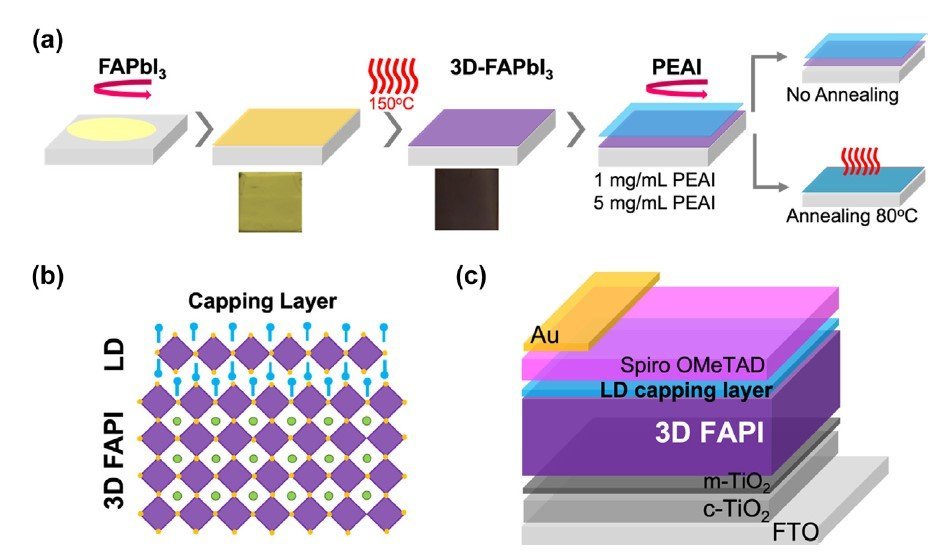Bulky cation hinders undesired secondary phases in FAPbI3 perovskite solar cells
Juanita Hidalgo, Lahoucine Atourki, Ruipeng Li, Andrés-Felipe Castro-Méndez, Sanggyun Kim, Emmet A. Sherman, Alexander S. Bieber, Meng-ju Sher, Lea Nienhaus, Carlo A.R. Perini, Juan-Pablo Correa-Baena,
Materials Today, Volume 68, 2023, Pages 13-21, ISSN 1369-7021,
https://doi.org/10.1016/j.mattod.2023.06.010
Interfacial treatments using bulky cations on 3D lead halide perovskites (LHPs) have led to over 25% power conversion efficiencies, but the reasons for this boost remain unclear. This study zeroes in on formamidinium lead iodide (FAPI) perovskites and shows that phenethylammonium iodide (PEAI) prevents the FAPI from changing into less desirable hexagonal forms in air exposure. Using advanced analytical methods, researchers discovered that untreated FAPI films predominantly show these undesired hexagonal phases. However, when coated with PEAI, FAPI films exhibit improved carrier lifetimes and photoconductivity. Such PEAI-treated FAPI solar cells can achieve up to 20.2% efficiency and 1.14 V open circuit voltages, marking one of the top performances for FAPI cells without extra cations.
How Litos Lite was used
Solar cell performance was evaluated under a solar simulator LITOS LITE from Fluxim, with AM1.5 spectrum, same light intensity for the maximum power point tracking for 180 s. The current density–voltage (JV) curve was measured in a forward and reverse bias at a scan rate of 50 mV/s. The cells were masked for measurement with a pixel area of 0.0625 cm2. Nitrogen was flown in the measurement chamber during characterization.

